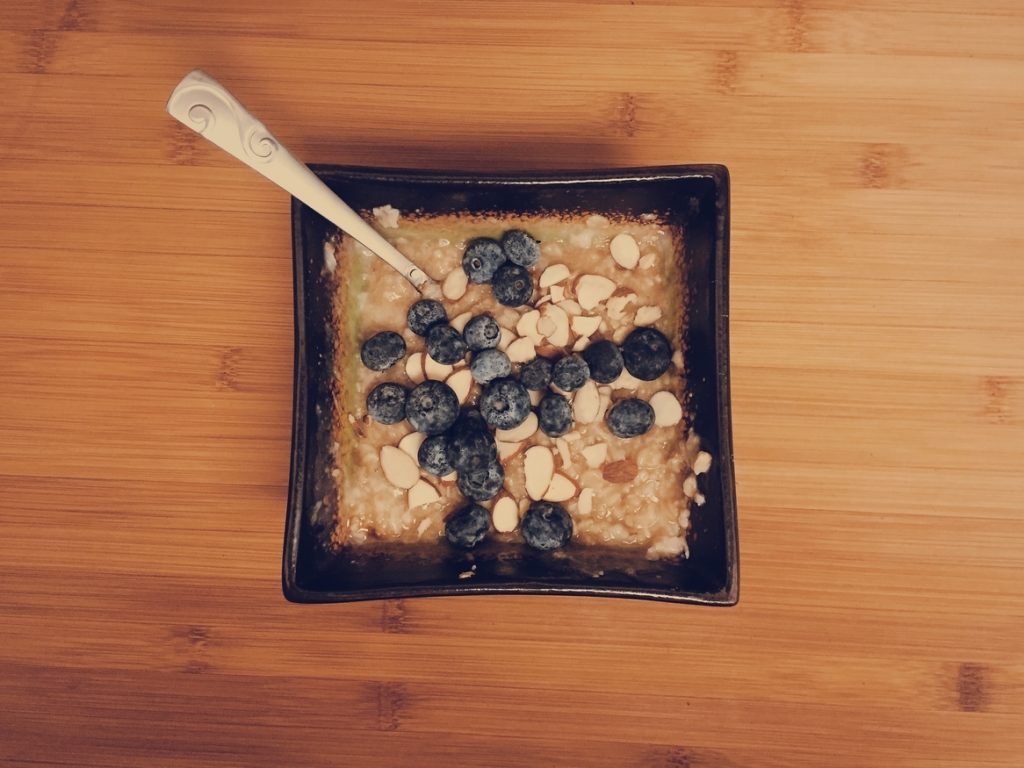[cs_content][cs_section parallax=”false” style=”margin: 0px;padding: 45px 0px;”][cs_row inner_container=”true” marginless_columns=”false” style=”margin: 0px auto;padding: 0px;”][cs_column fade=”false” fade_animation=”in” fade_animation_offset=”45px” fade_duration=”750″ type=”1/1″ style=”padding: 0px;”][cs_text]
Eating A Healthy Breakfast – Part One
‘Give your child the start to the day that can help them be successful at school and their activities.’
Breakfast as you probably are aware is one of the key if not the most key meal of your child’s day.. After sleeping all night, a child’s body has been slowly burning energy and growing, helping repair and build new tissue, and lay new bone amongst other processes. When they wake it needs new fuel to continue this process and help them start the day well. One of the biggest problems teachers experience is that sugar high from unhealthy snacks and then the drop off when a child’s focus begins to disappear and their blood sugars drop. Starting with a healthy breakfast, and providing them with healthy snacks and lunches during the school day can help your child’s focus and energy levels to be maintained and remain steady throughout the day, helping to avoid this.
When we ask kids at football trainings what they had for breakfast the overwhelming reply from many fit into the piece of toast, nothing, or some cereal answer, at least the toast and cereal is something, but nothing is simply not good enough.
It is something we try to help them understand and explain how this will affect them not only on the pitch, but in life as well.
For kids who play sport and are very active it’s important they keep a variety of healthy foods up, and by starting the day with a good breakfast it sets them up for a success in many ways. A piece of toast with jam is pretty poor nutritionally, but a piece of multi-seeded toast with some avocado, tomatoes and a slice of cheese is a lot better, and will give them longer sustained energy, even the use of a nut butter in this case would be better if they are free from nut allergies.
When it comes to cereals it is important to take note of the sugar content simply looking on the back of the packet and noting how much sugar there is can help you make a better decision.
- As a guideline, 5g of sugar per 100g of cereal is pretty good and should be the benchmark. Where that sugar is coming from is also important, if fruit is included then the sugar is quite possibly from that and not added refined sugar, which for your child is a much better option. Refined sugar is a big no go and should set alarm bells ringing.
- Take a look at the ingredients, and note which foods appear first in that list. Foods that have the greatest amount present appear first. Comparing that with the sugar content will help give you a general overview of where that sugar is coming from.
Packaging examples
(Note: The first two are fictional examples)
Option 1 Poor
Ingredients
Oat Flakes,Wheat, Bran Flakes, Apple juice, Fructose syrup, Sunflower seeds, Sultanas, Honey
Per 100g
Carbohydrates 60g
Sugars 45g
Option 2 Good
Ingredients
Oat Flakes, Wheat,Bran Flakes, Sunflower Seeds, Sultanas
Per 100g
Carbohydrates 60g
Sugars 5g
TIP
One thing to be weary of is the use of fruit juice to sweeten cereals, while it is fruit juice, it is still very high in sugar and should be counted as a poor source for your child.
Here is an actual example of Rolled Oats, you can see how low this is in sugars, which is why it is recommended as a great source of breakfast by many nutritionists.
Ingredients
Per 100g
Carbohydrates 67.70g
Sugars 0.99g
NOTE how low this is per 100g
Protein
Protein based breakfasts such as eggs are a great start to the day, and can be included in many different ways to make them taste different through combining lots of different food options that change the taste. Adding some ham, or a few slices of chicken to the meal really bulks it up, and when combined with something like a toasted slice of rustic bread, some tomatoes or wilted spinach, it will give a nice slow release of energy into your child’s body and keep their concentration levels up. We highly recommend getting in some breakfasts like this during the week.
Water is by far the winner when it comes to fluids for children and a glass of filtered water with breakfast is much better than many other breakfast style drinks. Giving children a full water bottle for school to sip on through the day is a perfect way of them maintaining hydration and is useful for their sports and activities.
Overall a general mantra should be ‘Variety is Key’, using a varied diet is one of the best ways of avoiding food boredom, taking in nutrients from a variety of different whole food sources, helps with your child’s overall development and exposes them to different healthy foods.
For some great ideas on healthy breakfasts a couple of books we highly recommend for tasty, simple, quick breakfasts (amongst other meals) are the Medicinal Chef series by Dale Pinnock, ‘Eat Your Way to Better Health’ and ‘Healthy Every Day’. another great book for reference is by Glen Matten ‘The 100 Foods You Should Be Eating’.
- Adolphus, K., Lawton, C. L., & Dye, L. (2013). The effects of breakfast on behavior and academic performance in children and adolescents. Frontiers in Human Neuroscience, 7, 425. http://doi.org/10.3389/fnhum.2013.00425
- Cooper, SB., Bandelow, S., Nevill, ME. (2011). Breakfast consumption and cognitive function in adolescent schoolchildren. Physiological Behaviour, 103(5): 431-439.
- Pivot, RT., Tennal, KB., Chapman, SD. (2012). Eating breakfast enhances the efficiency of neural networks engaged during mental arithmetic in school-aged children. Physiological Behaviour, 106(4):548-555.
In Part Two we’ll give you some easy tasty recipes to follow
[/cs_text][/cs_column][/cs_row][/cs_section][/cs_content]


